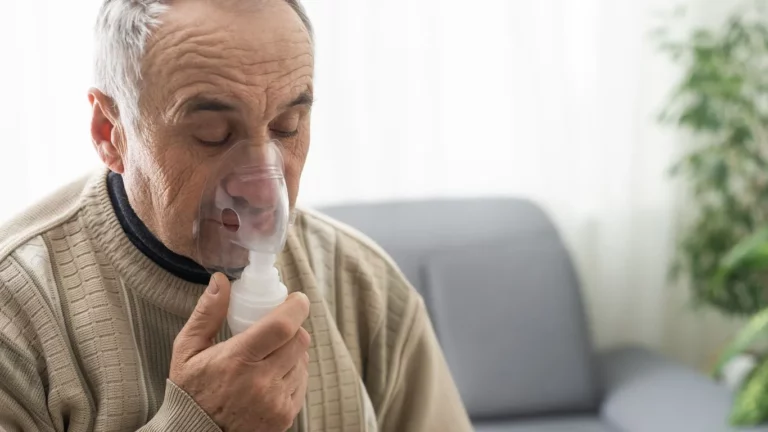Best Sleeping Positions for Rheumatoid Arthritis Pain Relief That Work
Rheumatoid arthritis and best sleeping positions for pain relief—if you’ve ever tossed and turned through the night with aching joints, you already know how real this struggle is. As a Rheumatology Nurse Practitioner, I’ve had more conversations than I can count with patients who are desperate for just one solid night’s sleep. Pain doesn’t clock out at bedtime, and RA seems to have a sixth sense for when you’re trying to get some rest. Let’s talk through it, just like we would in clinic, and break down why your sleep might be suffering and what you can do—starting tonight—to make it better.
Why Sleep Matters More Than Ever with Rheumatoid Arthritis

RA is not just joint pain. It’s inflammation, fatigue, stiffness, and sometimes even depression—especially when you’re running on empty because of poor sleep. I’ve seen patients do all the right things during the day: stay active, take meds, eat anti-inflammatory foods. But if they’re not sleeping well, their symptoms flare like clockwork.
It’s because sleep is a built-in healing mechanism. Deep sleep is when your body resets, reduces inflammation, and processes the stressors of the day. Miss out on that too many nights in a row? Your immune system stays on high alert, which worsens the very autoimmune response we’re trying to control in RA.
How RA Pain Messes with Your Sleep
RA pain has a sneaky way of building up just when you’re trying to relax. For many of my patients, joint stiffness actually worsens in the evening, particularly in the smaller joints—hands, wrists, and feet. You lie down, and suddenly that low-key ache turns into a deep, persistent throb. Or you wake up at 2 AM because your shoulder feels like it’s locked in place. Sound familiar?
Common reasons why sleep becomes elusive for RA patients:
- Joint pain and stiffness that worsen during inactivity
- Inflammatory cytokines that disrupt your body’s sleep-wake cycle
- Side effects of medications (especially corticosteroids)
- Stress and anxiety related to chronic illness
That’s why finding the best sleeping positions for pain relief isn’t just a comfort hack—it’s part of managing the disease holistically.
Best Sleeping Positions for Pain Relief in Rheumatoid Arthritis
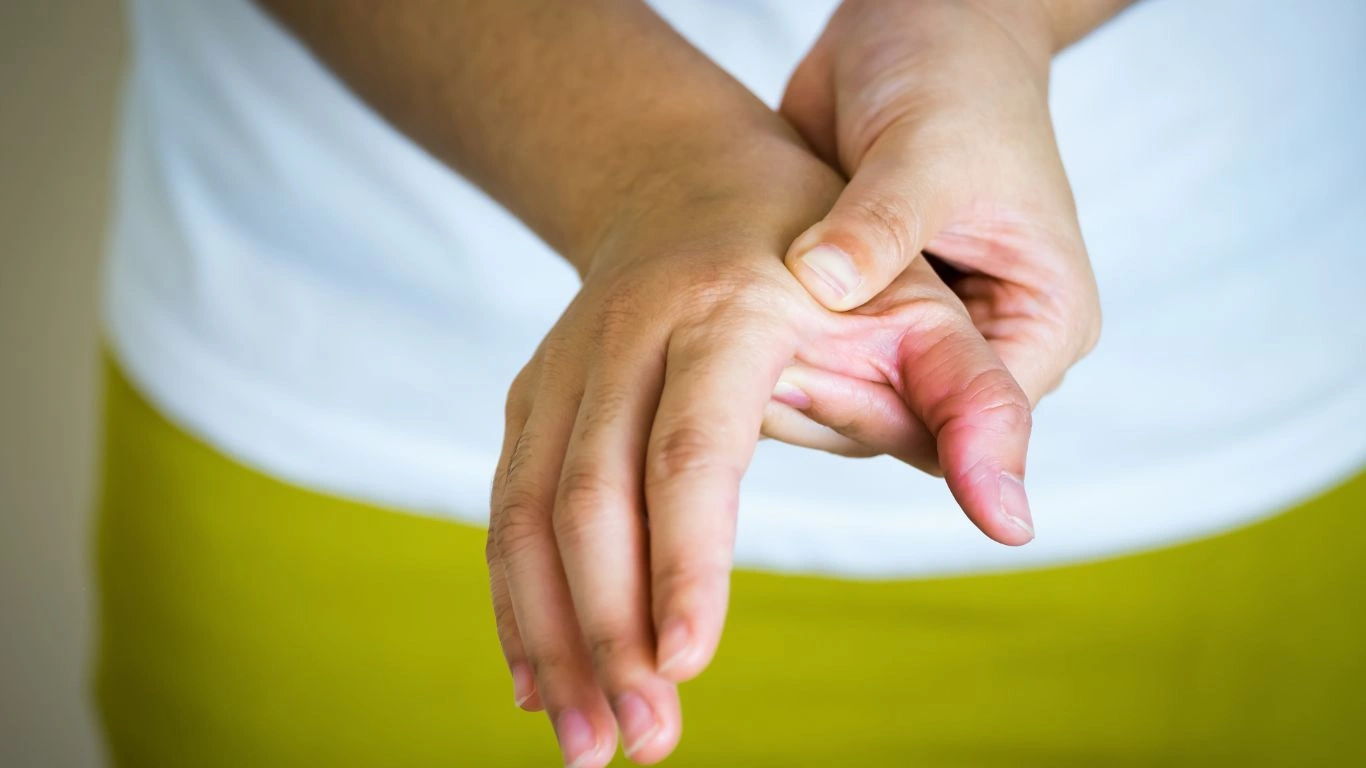
Now this is where it gets personal. Over the years, I’ve given lots of advice on sleep positions—and I’ve tested quite a few myself when my own joints acted up after long shifts. The right position can take pressure off inflamed joints and improve circulation, making a huge difference in how your body recovers overnight.
1. Side Sleeping with Pillow Support
This is hands-down the favorite for most of my RA patients. It’s especially good if you deal with hip or knee pain. The trick is to place a pillow between your knees. It keeps your spine aligned and reduces the strain on your hips. If you have shoulder pain, make sure not to sleep on the affected side. Use a supportive, memory foam pillow under your neck to keep everything neutral.
Pro Tip: A small pillow under the arm can prevent shoulder joints from collapsing inward, which can cause a nasty morning flare-up.
2. Sleeping on Your Back with Strategic Support
Back sleeping works wonders if you’re dealing with neck, lower back, or shoulder pain. But you’ve got to do it right. Prop a pillow under your knees to reduce lower back stress. Add a small rolled towel under your neck—this helps keep your spine in alignment. For hand or wrist discomfort, try resting them on small pillows or wearing soft braces to avoid awkward angles during the night.
Personal tip: I once had a patient swear by hugging a body pillow while lying on their back. Gave her arms support and helped her feel less anxious.
3. Avoid Sleeping on Your Stomach
I get it—it feels comfy to some people. But if you’ve got RA, especially in your neck, back, or shoulders, sleeping on your stomach is a one-way ticket to pain town. It forces your neck into an unnatural angle and puts pressure on your spine and joints. I always tell patients: if you love stomach sleeping, train yourself to roll onto your side with a pillow against your stomach. It gives the same “hugged in” feeling without the joint strain.
Why Position Changes May Be Harder with RA
When you’re dealing with joint stiffness and fatigue, even turning over in bed can feel like a workout. Some patients tell me they wake up in the same position they fell asleep in—partly because it hurts too much to move. If that’s you, it’s even more crucial to start out in a good position, with all your support in place.
One small thing that makes a big difference: satin or silk sheets. They reduce friction and make it easier to shift around without jarring your joints.
Other Sleep-Boosting Tips I Recommend to My RA Patients

Okay, so sleep position is a huge piece of the puzzle—but it’s not the whole picture. Here’s what I usually walk through with patients who are still waking up sore and sluggish:
- Warm bath or heating pad before bed: Loosens joints and signals your body to relax.
- Gentle stretching: Especially for the hands, neck, and back. Just a few minutes can help.
- Consistent bedtime routine: Wind down with the same pattern nightly—your brain loves predictability.
- Medication timing: Some meds might work better when taken at night. Always ask your provider (I’ve tweaked this for many patients).
- Keep the room cool and dark: Helps regulate melatonin, and your body temp naturally drops as you fall asleep.
Remember: better sleep is not a luxury—it’s a critical part of your RA management plan. The best sleeping positions for pain relief might seem like a small thing, but they really do add up. I’ve seen patients go from nightly flare-ups to sleeping through the night just by making a few smart changes. And honestly? That makes all the difference the next day.
Choosing the Right Mattress and Pillows for RA Sleep Relief

Now that we’ve tackled the best sleeping positions for pain relief in rheumatoid arthritis, let’s get into the other half of the equation—your sleep setup. Believe me, even the perfect sleeping position won’t work its magic if your mattress feels like a concrete slab or your pillow flattens out halfway through the night. I’ve had patients upgrade their sleep gear and call me a week later asking why no one ever told them it would make *that* much difference.
Here’s how I break it down when helping folks rethink their sleep surfaces:
Mattress Matters More Than You Think
When you’ve got RA, especially with chronic joint inflammation, you need a mattress that supports without pressure. That’s a tricky balance. Too soft and your spine misaligns. Too firm and you’re waking up with pressure-point pain in your hips and shoulders.
- Medium-firm memory foam or hybrid mattresses tend to be the sweet spot for most RA patients. They contour to your body, absorb movement, and ease pressure on tender joints.
- Adjustable beds can be a total game-changer. They let you elevate your head and knees to reduce back strain and improve circulation.
- If a new mattress isn’t in the budget, try a quality memory foam topper. It can transform even an old bed into something more joint-friendly.
From my own nights dealing with aching knees, a 3-inch foam topper was what helped me stop waking up every time I turned over.
Pillows with a Purpose
Pillows aren’t just for your head anymore. RA calls for full-body support. I always suggest layering up:
- Neck support pillow: Keeps your cervical spine aligned. Memory foam or water-based pillows work well.
- Knee pillow: Especially useful for side sleepers to reduce lower back and hip strain.
- Wrist supports: Some patients swear by wearing soft wrist braces or resting hands on a folded towel to reduce night-time joint locking.
- Body pillow: Offers comfort and emotional support, plus relieves strain when hugging it with sore shoulders or knees.
When RA Medications Affect Your Sleep
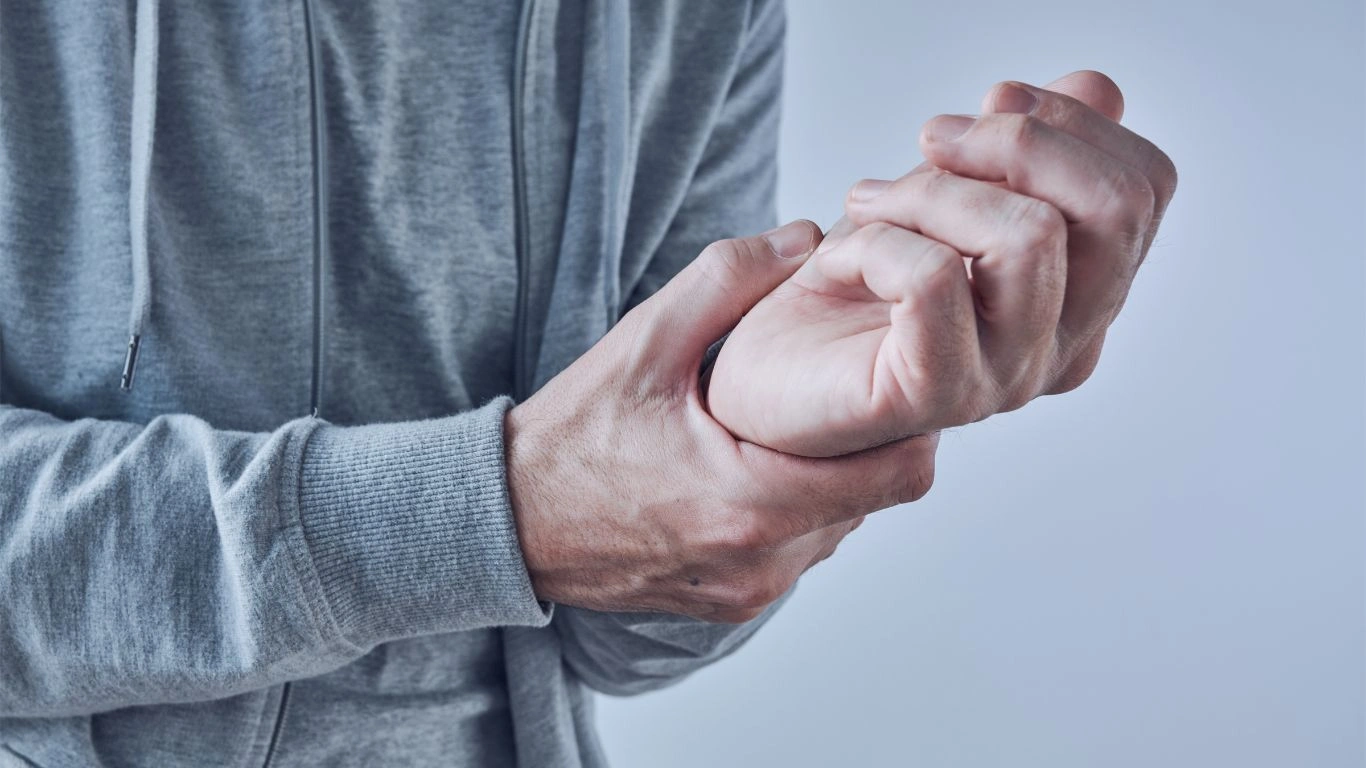
This is one of those topics that gets overlooked too often. But trust me, it’s big. Some of the very meds helping control your RA might be messing with your sleep—and not in the obvious ways.
Corticosteroids like prednisone, especially if taken in the evening, can jack up your energy levels at night and leave you wired at 2 a.m. I’ve had patients say, “I feel like I’ve had five cups of coffee”—and they weren’t wrong. That’s why I often recommend moving steroid doses to the morning, unless otherwise directed by your rheumatologist.
Then there’s methotrexate. While it’s a cornerstone drug for RA, it can cause fatigue and nausea that messes with your routine. Some folks sleep poorly on the day they take it simply because they feel “off.”
Other medication-related sleep issues I’ve seen include:
- Night sweats triggered by biologics or DMARDs
- Leg cramps from certain supplements (like calcium or iron)
- Restlessness or vivid dreams from antidepressants or nerve pain meds often prescribed alongside RA treatment
My tip? Keep a simple sleep log for a week. Track your meds, how you slept, how your joints felt in the morning. Sometimes patterns pop up, and we can tweak things to get your nights back on track.
Nighttime Joint Protection Techniques
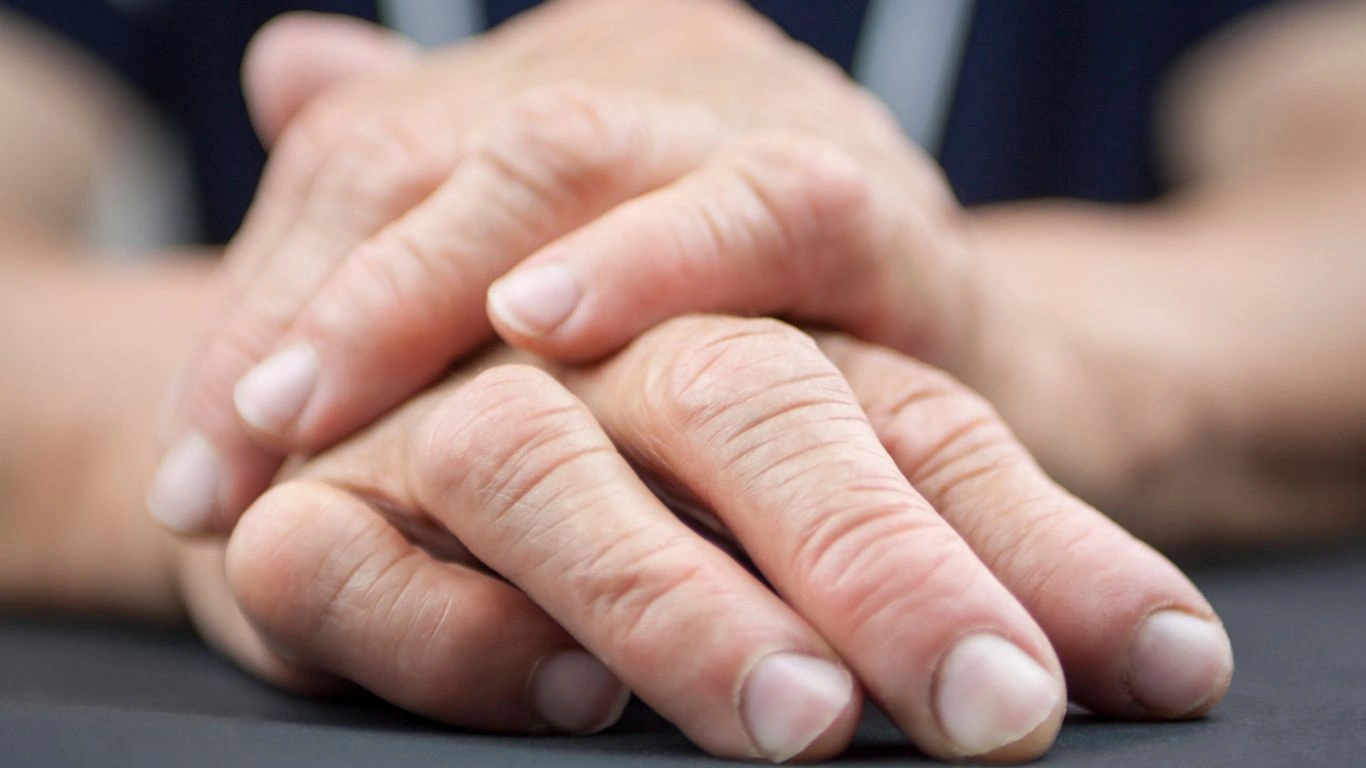
Alright, let’s talk about the small stuff that makes a big difference. Protective habits before and during sleep can keep your joints from flaring up overnight.
Wrist and Hand Splints
I use these myself when I’ve had long charting days (hello, EMR fatigue). Soft splints can keep your wrists from bending into awkward angles while you sleep. For people who wake up with finger stiffness or hand numbness, this is often a game-changer.
Compression Gloves
Yes, they might not be the sexiest sleepwear, but a good pair of mild compression gloves can reduce swelling and pain in the hands. Just make sure they’re breathable and not too tight. I’ve had patients tell me they don’t wake up with that “frozen claw” feeling anymore since they started using them.
Knee and Elbow Padding
If you’re a side sleeper, placing gentle padding (even a rolled towel) at pressure points like elbows or knees can prevent those joints from grinding against each other or the mattress. You’d be surprised how much that tiny bit of cushioning can reduce inflammation by morning.
Foot Elevation
For those who deal with ankle swelling or foot pain, elevating the feet slightly using a wedge or soft pillow can ease pressure and improve circulation. Especially if you’ve been on your feet all day, this is a must-try trick.
Creating a Rheumatoid-Arthritis-Friendly Sleep Environment
So many people underestimate the power of the bedroom environment in managing RA sleep troubles. I always say, your sleep space should be your healing space—not your office, not your TV lounge, not your snack zone.
Here’s what I recommend to my patients (and what I try to stick to myself):
- Keep the room cool: Around 65°F is ideal. Helps with inflammation and deeper sleep.
- Block out light and noise: Blackout curtains, white noise machines, or even earplugs if needed.
- Use essential oils or calming scents: Lavender, chamomile, or eucalyptus can be soothing for the nervous system.
- Limit screens an hour before bed: That blue light messes with your melatonin. Try a book, a warm drink, or a gentle stretch instead.
One of my long-time patients created a “joint-friendly wind-down kit”—eye mask, lavender oil, wrist brace, and a stretching band—and keeps it on her nightstand. That little routine not only eased her pain but gave her some control back over her nights. And honestly, that matters just as much.
Next up, we’ll dig even deeper into lifestyle changes, mind-body techniques, and some unconventional tricks I’ve seen work wonders. There’s still a lot to cover, but you’re on the right track—better nights are possible.
Mind-Body Techniques That Actually Help with RA Sleep Troubles

Now, let’s talk about something that doesn’t come in a pill bottle or a mattress box—your mindset. When you’re living with rheumatoid arthritis and trying to find the best sleeping positions for pain relief, your brain needs to be on your team. I’ve seen firsthand how stress, anxiety, and chronic frustration can sabotage even the best bedtime setup.
Mind-body approaches often get overlooked because they sound “woo woo” or too soft to touch real inflammation. But let me tell you, when you combine these strategies with physical adjustments, the results can be pretty amazing. I’ve used many of them myself—and recommended them to patients who later told me, “Why didn’t I try this sooner?”
Guided Meditation and Breathwork
These techniques work by dialing down the body’s stress response. And when cortisol drops, inflammation tends to ease up. Apps like Calm or Insight Timer offer great 10-minute sleep meditations that focus on body scanning or joint relaxation. Some nights, when my knees are throbbing, I’ll do a gentle breath count meditation and actually feel the pain soften—just from shifting my nervous system out of fight-or-flight mode.
Progressive Muscle Relaxation (PMR)
This old-school technique is golden for people with RA. You slowly tense and then release different muscle groups in your body. It helps you identify where you’re holding unnecessary tension—especially helpful when your joints already hurt and your muscles are tensing up around them.
Warm Epsom Salt Soak or Gentle Yoga
Nothing fancy here—just tried-and-true comfort. A 15-minute soak in a warm Epsom salt bath can ease joint stiffness before bed. Or, if baths aren’t your thing, a few minutes of restorative yoga (like legs-up-the-wall or gentle cat-cow stretches) can prep your body for rest. Pro tip: Pair the soak with lavender essential oil and low lighting—your joints and your brain will thank you.
Dietary Tweaks That Support Better Sleep with RA
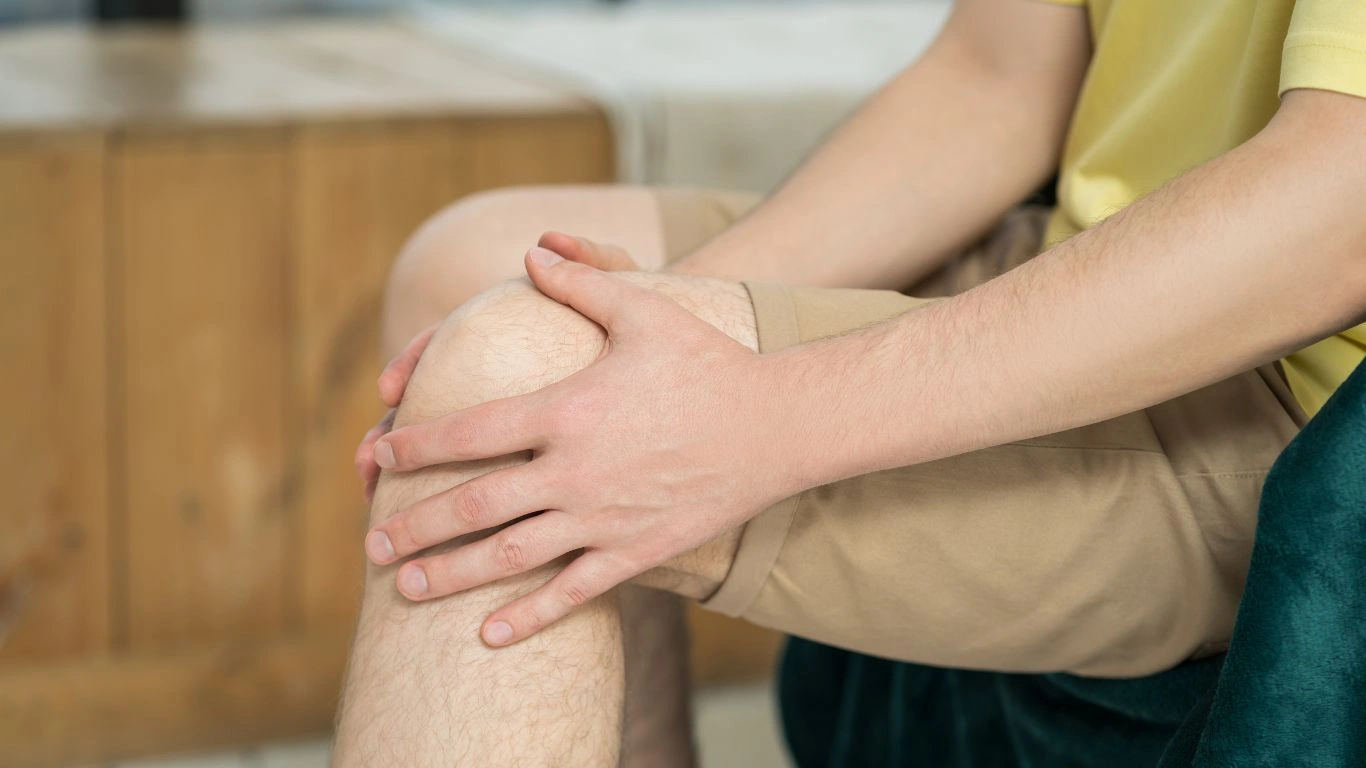
This is the part many people are surprised by. Yes, your dinner plate could be impacting your sleep—especially if you’re managing autoimmune inflammation like RA. I’ve had patients shift just a few habits and notice their nighttime pain and tossing-and-turning dial way down.
Foods That Fight Inflammation
The goal here is to eat in a way that helps quiet your immune system—not ramp it up.
- Omega-3 rich foods: Think wild salmon, chia seeds, flax, and walnuts.
- Colorful fruits and veggies: Berries, spinach, sweet potatoes—all packed with antioxidants.
- Tart cherry juice: I recommend this one often because it’s been shown to support joint pain and improve sleep quality. Try a small glass about an hour before bed.
Foods (and Drinks) to Avoid Before Bed
- Alcohol: It might help you fall asleep, but it tends to mess with deep, restful sleep cycles and can increase inflammation.
- Refined sugars and late-night carbs: These can trigger blood sugar crashes or low-grade inflammation that wakes you up at 3 a.m.
- Caffeine: Obvious one, but worth repeating—cut it off by early afternoon if you’re sensitive.
One of my patients swapped their nightly chocolate snack and glass of wine for herbal tea and tart cherry juice. Within a week, their midnight flares had calmed down dramatically. Sometimes it’s the small swaps that do the heavy lifting.
Alternative Therapies That Support Sleep for RA Patients
Okay, let’s be real. Sometimes, conventional medicine doesn’t fully cut it. As a Rheumatology Nurse Practitioner, I always start with evidence-based care, but I also respect the power of supportive therapies—especially when they’re used alongside your regular treatment plan.
Acupuncture
This one has some solid evidence behind it for managing pain and improving sleep. Tiny needles (which really don’t hurt) are inserted at specific points to stimulate circulation, release endorphins, and calm inflammation. I’ve had several patients use acupuncture regularly and report not only reduced joint pain but deeper, more restful sleep.
Massage Therapy
It’s not just relaxing—massage can improve circulation, ease muscle tension around swollen joints, and release “stuck” areas. A weekly or biweekly therapeutic massage, especially before bedtime, may ease stiffness and set the tone for restful sleep.
CBD or Magnesium Topicals
While research is still growing here, many patients use CBD cream or magnesium lotion as part of their night routine. They’re not cures, but they can reduce surface tension and relax muscles. Just be sure to run any new supplement or topical by your healthcare provider.
When to Talk to Your Rheumatologist or Sleep Specialist
If you’ve tried the sleep positions, the gear, the stress relief, and still feel like you’re walking through quicksand every day—it’s time to loop in your medical team. Persistent insomnia or fatigue might be a sign your RA isn’t fully controlled, or you could be dealing with secondary issues like sleep apnea, restless legs, or even medication side effects.
Keep a log of your sleep habits, what’s helping, what’s not, and bring it to your next visit. We love when patients come prepared because it helps us help you better. Trust me, I’d much rather tweak a plan than have someone silently suffering night after night.
References
- National Institutes of Health (NIH)
- Health.com
- Centers for Disease Control and Prevention (CDC)
- Arthritis Foundation
Disclaimer
This article is for informational purposes only and is not a substitute for professional medical advice, diagnosis, or treatment. Always seek the advice of your physician, rheumatologist, or other qualified healthcare provider with any questions you may have regarding a medical condition. As a Rheumatology Nurse Practitioner, I share my experience and insight, but individual care plans should always be personalized by your medical team.

Tarra Nugroho is a dedicated Nurse Practitioner with a strong foundation in family and preventive care. She brings both compassion and clinical expertise to her practice, focusing on patient-centered care and health education. As a contributor to Healthusias.com, Tarra translates medical knowledge into clear, empowering articles on topics like women’s health, chronic disease management, and lifestyle medicine. Her mission is simple: help people feel seen, heard, and informed—both in the clinic and through the content she creates. When she’s not caring for patients, Tarra enjoys weekend hikes, plant-based cooking, and curling up with a good health podcast.


